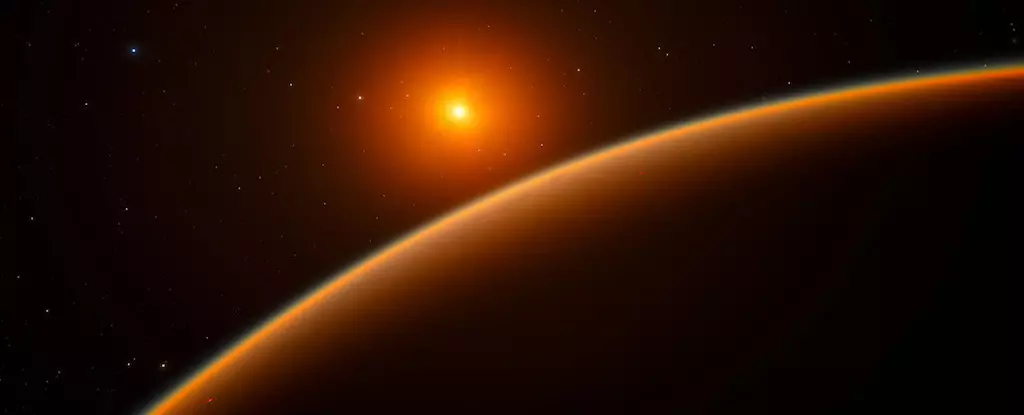Recent astronomical research has reshaped our understanding of exoplanet distribution within the Milky Way, revealing that Earth-like worlds, especially “super-Earths,” could be far more prevalent than previously presumed. Traditionally, the cosmic narrative was dominated by gas giants and ice giants, yet a groundbreaking study has uncovered an intriguing super-Earth found at a distance from its star reminiscent of Jupiter’s orbit. This discovery not only highlights previously unexplored planetary demographics but also suggests that our galaxy is strewn with an array of these intriguing worlds.
The term “super-Earth” refers to exoplanets larger than Earth but smaller than Neptune, providing a tantalizing glimpse into the dynamism of planetary formation. The lead researcher, Weicheng Zang, emphasizes this novelty: finding a super-Earth in a region typically occupied by much larger celestial bodies prompts us to reconsider what we consider the norm in planetary systems. This shift in perspective could revolutionize our understanding of how planets form and where they can exist.
Harnessing Gravitational Microlensing for Stellar Insight
One of the standout techniques employed in this study is gravitational microlensing, a phenomenon that occurs when a massive object, due to its gravitational field, warps space-time and magnifies the light from a distant star. This effect not only leads to brief spikes in brightness but also serves as a powerful tool for identifying planets that orbit farther from their stars. The study focused on a rare microlensing event, OGLE-2016-BLG-0007, which had been diligently observed since 2016.
The expansion of previous telescopic data has enabled researchers to assemble a much larger sample size – three times more than earlier studies. Such extensive data strengthens the argument that super-Earths are present in diverse orbital positions, including regions traditionally overlooked. It suggests that a significant portion of stars in our galaxy may host these tantalizing planets, specifically hypothesizing that roughly one out of three stars could have super-Earths within Jupiter-like orbits. This data shines a beacon of possibilities, transforming our understanding of planetary formation in various stellar environments.
Re-examining Planetary Diversity Beyond the Inner Solar System
Whereas previous assumptions leaned towards smaller, rocky planets being confined to closer orbits around their stars, the new findings challenge this notion, presenting a picture of expansive planetary diversity beyond the traditional confines. The implications are profound: if super-Earths can thrive in Jupiter-like distances, it opens the door for an entire spectrum of planetary types existing in less dense, yet equally complex, celestial regions.
Astrophysicists Andrew Gould and Jennifer Yee highlight that the once-clear distinctions between planets of varying sizes are becoming blurred. The statistical evidence suggests that super-Earths could be ubiquitous, signifying a profound shift in how we interpret the formation and distribution of planets across different galactic environments. This diversity amplifies the excitement for exoplanet researchers as it guides further exploration into the nuanced mechanisms behind planetary evolution.
The Road Ahead: Challenges in Exoplanet Detection
Despite the tantalizing possibilities this study presents, the pursuit of knowledge about distant exoplanets remains fraught with challenges. Gravitational microlensing, while potent, involves intricate detection techniques. As Richard Pogge notes, finding a microlensing event is challenging enough; discovering a microlensing star with its own planet is exponentially harder. These complexities emphasize that while we are uncovering vast realms of knowledge, the quest for understanding the various forms and conditions of exoplanets is still in its early stages.
Furthermore, the concept of super-Earths encompasses a broad range of characteristics. Their mass does not necessarily equate to habitability or surface conditions, still shrouded in mystery. Research like this not only expands our catalog of celestial possibilities but also provides critical insights into the processes driving planetary formation and stability.
Implications for Our Place in the Universe
Ultimately, these groundbreaking discoveries encourage us to reconsider Earth’s uniqueness. As we comprehend that super-Earths and their myriad configurations may be commonplace across the Milky Way, we are compelled to delve deeper into the cosmic fabric that weaves together life, planets, and stars. The diverse planetary systems painted by these findings might not only enhance our understanding of our solar neighborhood but also open gateways to address pressing questions about the potential for life on other planets. The ever-growing inventory of exoplanets serves as a reminder of our small but significant place in the sprawling universe, urging continuous exploration and curiosity about what lies beyond the familiar horizons of our home planet.

